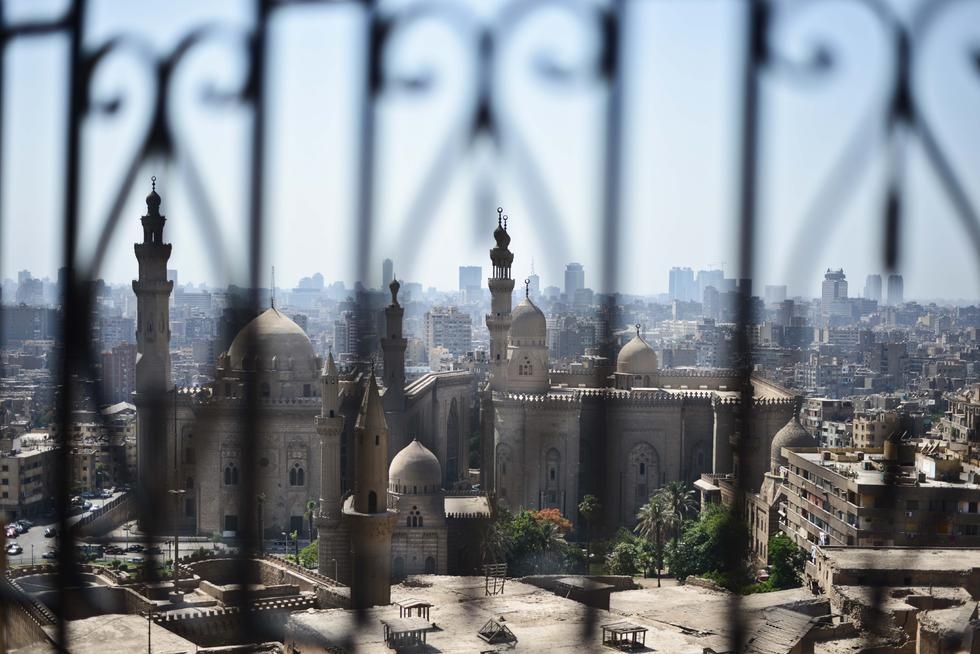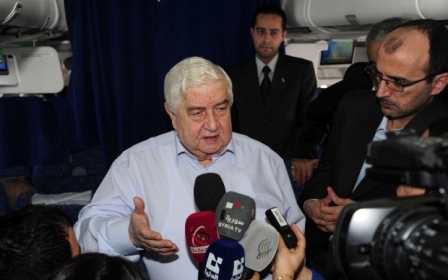The Iran nuclear deal: New economic opportunities for Egypt

In recent decades, Egypt and Iran have not played nice. This mutual enmity has been pervasive, trickling down even into the traditionally menial world of town planning decisions. In 1981, the nascent Islamic Republic of Iran named a Tehran street in honour of Khalid Islambouli, the chief assassin of former Egyptian president Anwar Sadat. Not to be outdone, a thoroughfare in Cairo commemorated Shah Reza Pahlavi, the disgraced Iranian monarch who obtained asylum in Egypt.
In the intervening years, the situation has hardly improved. Egypt is currently the only Arab nation without an embassy in Iran. It should come as little surprise, therefore, that recent estimates place trade between the two regional powerhouses at a modest $331mn per year.
In addition to this seismic bilateral divide, external states have placed considerable restraints on relations between Egypt and Iran. At present, sanctions imposed on Iran by the United States are the most obvious obstacle. The most relevant of these sanctions denies access to the American financial system to any nation that transacts with Iran without Washington’s authorisation. Given the central importance of aid from the United States to the Egyptian economy, this represents a serious practical disincentive for Egypt to pursue commercial opportunities with Iran.
A less overt current of pressure against Egypt’s relationship with Iran originates from the former’s key regional ally, Saudi Arabia. Along with several of its Gulf neighbours, Saudi Arabia has lavished crucial financial support on Egypt. At this year’s Egypt Economic Development Conference alone, Saudi Arabia, the United Arab Emirates and Kuwait pledged a combined total of $12bn to the Egyptian economy. Egyptian President Abdel Fattah al-Sisi has repeatedly acknowledged the strength and importance of diplomatic ties between Egypt and “its brothers in the Gulf”.
By contrast, Saudi Arabia has matched its vigour in pursuing close relations to Egypt with its dogged determination to frustrate Iran’s national interest. The primary concern of Saudi Arabia seems to be its perception that Iran is seeking to extend its regional influence through supporting Shia insurgents in Iraq, Syria and Lebanon. In March 2015, this distrust of Iranian foreign policy culminated in the Saudi intervention in Yemen. Saudi Arabia justified the military operation with accusations that Iran had backed Houthi revolutionaries in that country.
In this context, it is tempting to conclude that Egypt has declared its geopolitical hand. Iran was a conspicuous absentee from the Egypt Economic Development Conference earlier this year. Also in 2015, Sisi committed Egyptian forces to the Saudi intervention in Yemen. Given Egypt’s traumatic military history in that country, where thousands of Egyptian soldiers perished five decades ago during the North Yemen Civil War, Sisi’s support for the latest Yemeni campaign is significant. The potent cocktail of Saudi Arabia’s financial support and its antipathy towards Iran imposes a self-evident restraint on any Egyptian desire to engage in Persian trade.
Notwithstanding Sisi’s pro-Saudi diplomatic gestures, there are subtle indications of a thaw in the frosty Egyptian-Iranian relationship. When the United States and European Union imposed a fresh round of sanctions on Iran in 2012, Iran had a surplus of oil products to sell immediately to a greatly constrained market. The previous Egyptian government, led by Mohammed Morsi, initially expressed “no objection” to purchasing Iranian oil. Within weeks, the Morsi administration retreated from this position. Several analysts suggest that the threat of the United States’ third-party sanctions, and the prospect of losing access to the American financial system, inspired the Egyptian policy about-face.
Following recent developments, this disincentive for Egyptian trade with Iran may soon fall away. On 14 July, Iran and the permanent five members of the UN Security Council plus Germany concluded the Iran nuclear deal. If Iran works efficiently to establish its compliance with the agreement, analysts predict that US and EU sanctions may be lifted by early 2016. This would include removing the current prohibition on third party nations such as Egypt from trading directly with Iran.
Despite the 2013 demise of the Morsi government, which initially reached across the historical divide to Iran, the opportunity for renewed diplomatic ties may not have been lost. To be sure, the Islamist principles underpinning Morsi’s presidency offered a unique ideological basis for diplomacy with the Iranian theocracy. It may well be, however, that the current Sisi administration enjoys a consensus of pragmatism with Iran on a variety of pressing regional issues.
For both nations, combating the threat of fundamentalist terrorism is a key, even primary priority. Sisi has also made significant gestures of allegiance and friendship with Russia, Iran’s most powerful ally. Perhaps it was these shared concerns that caused Iranian dignitaries to appear on the guest list for Sisi’s inauguration as president. This was no small gesture towards Iran, given Sisi’s very deliberate exclusion of regional heavyweights such as Qatar and Turkey from the ceremony.
At a time when the geopolitical divide between Egypt and Iran is narrowing, commercial opportunities abound for trade between the two nations. For example, upon the removal of economic sanctions under the Iran nuclear deal, Iran has stated its desire to increase its oil production from its current rate of 1.2 million barrels per day to 2.3 million barrels per day. In order to maintain OPEC’s current oil price, Saudi Arabia or Iraq (the two OPEC nations that currently export more oil products than Iran) would need to reduce its oil output.
As Professor Nader Habibi of Brandeis University notes, however, neither nation is likely to accommodate the recovery of Iran’s oil industry in this way. In Iraq, both Arab and Kurdish oil producers are currently increasing oil output levels, and showing little appetite for scaling back this trend. Saudi Arabia, of course, has its ideological reasons for denying any boost to Iranian economic interests. Indeed, during the Iran-Iraq War, Saudi Arabia deliberately attacked the Iranian oil industry by flooding the global market with its reserves, causing a record plummet in the price of oil.
Without the support of OPEC, Iran will need to trade its enormous oil reserves aggressively in the post-sanctions world. Egypt, with its seemingly insatiable appetite for oil products, could capitalise on these circumstances and negotiate oil imports from Iran on very attractive terms. In fact, reopening bilateral trade between Egypt and Iran in the oil sector would reflect the existing reality that Egypt is already purchasing Iranian oil products, albeit indirectly.
Since 2012, Iran has partially manoeuvred around international economic sanctions by using the United Arab Emirates as an intermediary to sell Iranian oil products. Oil purchased from the UAE accounted for more than 60 percent of Egypt’s total imports for the year 2014. If the United States removes the third-party sanctions under the Iranian nuclear deal, Egypt will be able to import oil directly from Iran. This would obviate the need for Egypt to use the UAE as a “middleman,” resulting in the cheaper and more efficient importation of Iranian oil products.
There are encouraging signs that the potential for developing increased commerce between Egypt and Iran is not limited to the oil sector. Ahmed al-Sayed al-Naggar, author of several studies on economic relations between the two countries identifies the Egyptian fruit industry as one attractive target for economic growth. For example, before 2010, Iran was the world’s third-largest importer of Egyptian oranges.
Since then, however, a series of Iranian bans on the importation of various agricultural products (including Egyptian oranges) has crippled trade between the two nations in this area. In December 2013, a US Foreign Agricultural Service report concluded that the Iranian economic sanctions also contributed to this commercial malaise, adversely affecting “the ability of importers to pay Egyptian suppliers through the normal channels”. The successful implementation of the Iran nuclear deal could revive this fruit export opportunity for Egypt.
The Sisi administration might also consider marketing Egypt as an important tourism destination for Iranians. In addition to Egypt’s most famous tourist attractions, the nation also boasts seven sacred Shiite shrines. To put this in perspective, Syria has only one. Studies suggest that this current of religious tourism alone could lead an extra 50,000 Iranian tourists per year to travel to Egypt.
Iran has already indicated considerable receptiveness to growth in this area. In 2013, former Iranian president Mahmoud Ahmadinejad reportedly signed a draft law to lift visa requirements for Egyptian tourists visiting Iran. At the Non-Aligned Movement summit held in Tehran in August 2012, Ahmadinejad also proposed a scheme of reciprocal visas for Egyptian and Iranian businessmen to facilitate further investment and economic exchange between the two countries.
In summary, the lifting of economic sanctions contemplated by the Iran nuclear deal promises to remove a significant restraint on trade between Egypt and Iran. The second key restriction on Egyptian-Iranian relations, Saudi Arabia’s influential role in Egyptian politics, ostensibly remains. Yet at a time when Egypt and Iran’s political objectives are converging, Egyptian and Saudi aims appear to be drifting apart.
At a March 2015 Arab summit held in Sharm-el-Sheikh to discuss the Saudi-led Yemeni intervention, al-Sisi read a letter encouraging the Middle East’s leaders to “resolve all emerging challenges peacefully without foreign involvement”. The author of this advice was none other than Cairo and Tehran’s mutual friend, Russian President Vladimir Putin.
On top of Sisi’s apparent affront, commentators observe that the anti-Islamist preoccupation initially underpinning Saudi enthusiasm for Sisi’s replacement of Morsi has given way to an emphasis on combating the rise of Shia, Iranian-backed influence. Yet Egypt now faces the more immediate threat of Sunni extremism, both in the country’s eastern Sinai region and along its western border with Libya. Iran, with its ongoing battle against Islamic State in Iraq and Syria, shares Egypt’s overwhelming concern with eliminating fundamentalist terrorism.
For the foregoing geopolitical and economic reasons, Egypt and Iran may have more in common right now than ever before. In such circumstances, the opportunity for trade between the two Middle Eastern powerhouses is a potentially lucrative one indeed.
- Eman El Sherbiny is a freelance journalist, financial writer and contributing writer for Business Today and copy-editor of Al-Bawaba English. David Wood currently lives in Cairo and is pursuing a Master's in Middle Eastern Studies at the University of Texas at Austin. He has a particular interest in the role played by nationalist movements in the modern history of the Middle East.
The views expressed in this article belong to the author and do not necessarily reflect the editorial policy of Middle East Eye.
Photo: Egypt’s has a number of most famous tourist attractions including seven sacred Shiite shrines, which could be an incentive for Iranian tourism
Middle East Eye propose une couverture et une analyse indépendantes et incomparables du Moyen-Orient, de l’Afrique du Nord et d’autres régions du monde. Pour en savoir plus sur la reprise de ce contenu et les frais qui s’appliquent, veuillez remplir ce formulaire [en anglais]. Pour en savoir plus sur MEE, cliquez ici [en anglais].





